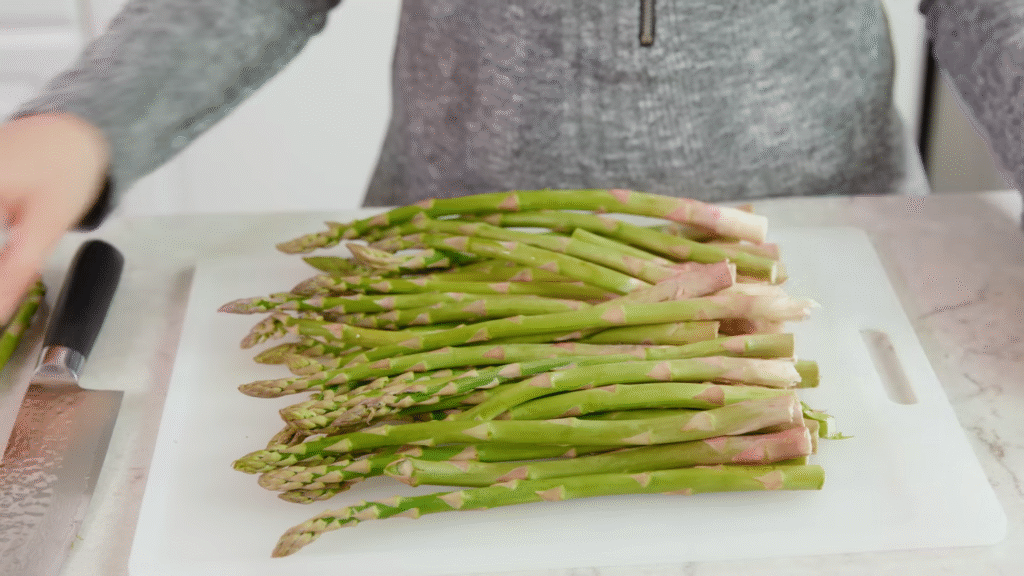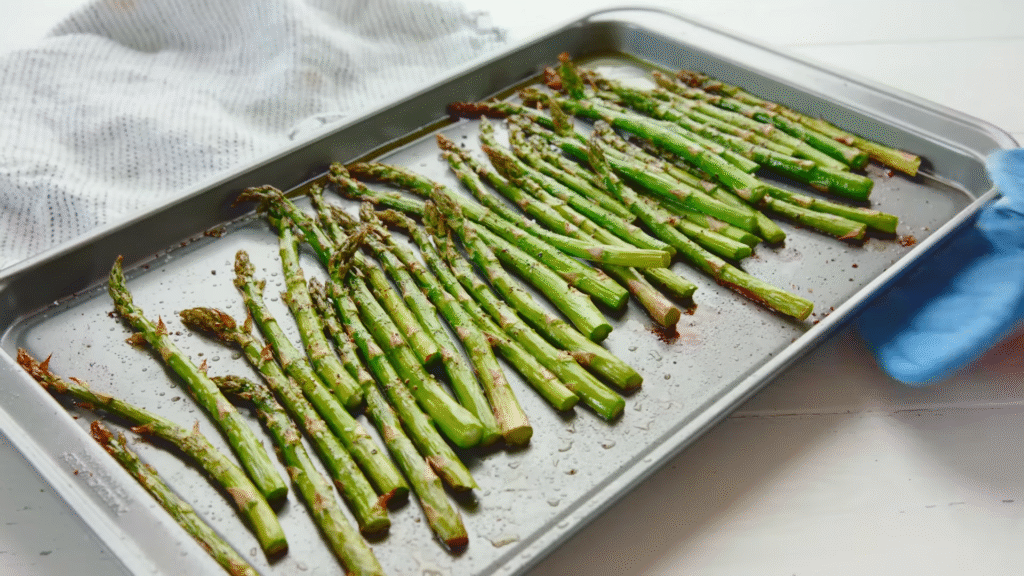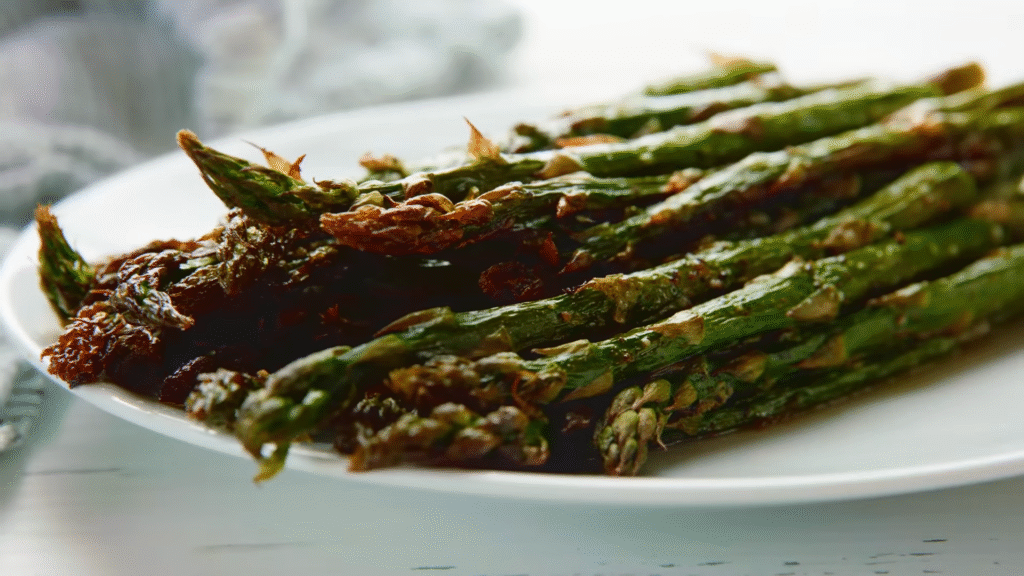I’ll be honest with you—I never thought I’d love asparagus this much until I roasted it in the oven one day out of curiosity. Boiled asparagus? Too soggy. Steamed? Meh, it lacked flavor. But roasted asparagus? Crispy tips, tender stalks, and a nutty flavor that just made me fall in love. And I know you’ll feel the same once you try this.
Let me walk you through my easy oven roasted asparagus recipe. No fancy steps, no chef-level skills—just good food made simple.
Why Roast Asparagus Instead of Boiling or Steaming?
Boiling or steaming asparagus often makes it soft and watery. When you roast it, something magical happens:
- The high heat gives it a slight crisp.
- The natural sweetness comes out.
- The tips get golden and full of flavor.
Trust me, once you roast asparagus, you won’t go back to any other method.
What You’ll Need (Simple Ingredients)

No weird spices, no fancy oils. Here’s what I always use:
- Fresh asparagus – Thicker stalks roast better, but any kind works.
- Olive oil – Helps with that crispy texture.
- Salt & black pepper – Basic, but perfect.
- Garlic powder or minced garlic (optional, but I love it).
- Lemon juice – A little squeeze at the end makes it taste fresh.
How to Prep the Asparagus
Here’s a quick tip: asparagus has tough ends that you don’t want to eat. To remove them:
- Hold one spear and bend it gently.
- It will naturally snap at the right spot.
- Use that piece as a guide and trim the rest with a knife.
This makes the stalks tender and perfect for roasting.
Step-by-Step: Oven Roasted Asparagus

Follow these easy steps and you’ll get perfect asparagus every single time:
- Preheat the oven – Set it to 400°F (200°C).
- Line a baking sheet – Use parchment paper for easy cleanup.
- Season the asparagus – Place them on the sheet, drizzle with olive oil, sprinkle salt, pepper, and garlic. Toss gently with your hands.
- Spread in a single layer – Don’t pile them up; they roast better when they have space.
- Roast – Bake for 12–15 minutes, depending on how thick they are.
- Finish with lemon juice – Right after taking them out, squeeze a bit of lemon for brightness.
That’s it. Easy, fast, and so good.
My Favorite Ways to Serve Roasted Asparagus
This is why I love this recipe—it goes with almost everything:
- Next to roasted chicken or steak.
- Mixed into pasta with olive oil and Parmesan.
- Chopped into salads for crunch.
- Even as a snack straight off the pan (yes, I’ve done this many times).
Tips for the Best Roasted Asparagus
- Don’t overcook – Keep an eye on them; you want tender but not mushy.
- Go heavy on garlic if you love bold flavor.
- Add Parmesan – Sprinkle grated Parmesan in the last 2 minutes of roasting for a cheesy twist.
- Try balsamic glaze – A drizzle after roasting makes it taste restaurant-style.
FAQs About Oven Roasted Asparagus
Q: How do I know when asparagus is done?
A: The stalks should be bright green, tender when pierced with a fork, and the tips slightly crispy.

Q: Can I roast asparagus ahead of time?
A: Yes, but it tastes best fresh. If reheating, do it in the oven, not the microwave, so it stays crisp.
Q: Should I peel asparagus before roasting?
A: No need. Just trim the tough ends and you’re good to go.
Q: What’s the best oven temperature for asparagus?
A: 400°F (200°C) works best—hot enough to caramelize, but not so hot that it burns quickly.
Q: Can I use frozen asparagus?
A: Fresh is always better, but yes, you can. Just roast a few extra minutes and expect them to be a little softer.
